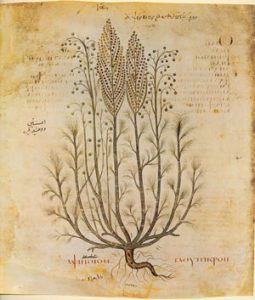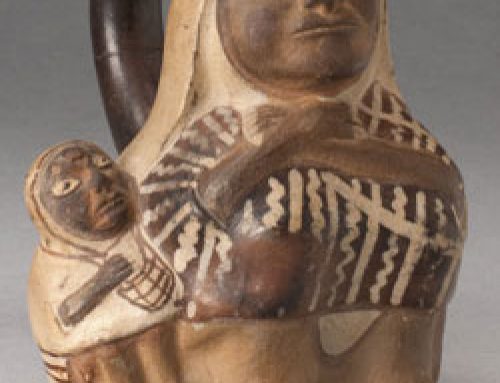
Roman medicine: Galen used surgical instruments like these
What do we mean by Roman medicine?
Roman medicine is really West Asian and African medicine. That’s because most of the great doctors of the Roman Empire lived in West Asia (in Turkey and Syria), or in Africa (in Egypt), not in Europe.
Egyptian doctors and medicine
Indian doctors and medicine
Ancient Greek medicine
All our ancient Rome articles
These doctors started from earlier Egyptian, Indian, and Greek medical research. Like Egyptian doctors, Roman doctors like the Sicilian Scribonius Largus organized their medical books starting with the head and moving down to the toes.
What a Roman doctor could do
Like the Greeks, Roman doctors believed in the four humors and the power of blood-letting. That was mostly wrong. But Roman doctors also used many Indian herbal medicines. Some they grew in the Roman Empire and others they brought by ship from India. They probably used zinc to cure eye infections, and they used copper as medicine too. Some of those Indian medicines probably did help cure people.
Roman doctors used surgery to help with trachoma (eyelid scarring from infections), and to remove a fetus that had died unborn so that the mother wouldn’t die too. They created bronze pessaries to help women whose uterus or bladder had fallen into the wrong place after childbirth. Scribonius Largus and Dioscurides used live electric fish to give shocks to patients, to cure chronic pain from headaches or gout, and possibly hemorrhoids too.
History of electricity

Absinthe, from Dioscurides’ book on Roman medicine (500s AD)
Ptolemy and how eyes work
In the 100s AD, the Egyptian scientist Ptolemy did medical research on how people’s eyes worked.
Who was Ptolemy?
How do eyes work?
Ptolemy thought (wrongly) that invisible rays came out of your eyes to hit objects, like radar, instead of light entering your eyes.
Galen: a Roman doctor
But the most important Roman doctor was Galen (GAY-len), who lived in Pergamom (in modern Turkey) at the same time that Ptolemy was working in Egypt. Galen eventually moved to Rome, where he wrote a book about medicine. A shortened version of Galen’s book was the main medical book that doctors used in Europe for the next thousand years and more.
Who were the Skeptics?

A pharmacist and her enslaved assistant selling medicines
Like Ptolemy, Galen wrote his book to show that the Skeptics were wrong. He thought people really could use their senses to understand how the world worked. Galen repeated a lot of Hippocrates‘ ideas about the four humors, which was all wrong.
But he also added a lot of observations about how the human body worked that he learned from looking at the insides of human bodies. And some of this was right.
Galen saw the insides of people by looking at wounded soldiers and gladiators. He also cut open a lot of animals including macaques (a kind of monkey) to see how bodies worked.
Galen and medical research
Galen wrote the first good description of the different parts of people’s eyes. He certainly knew more about anatomy than Hippocrates did. Galen knew what the lungs of people with tuberculosis looked like.
What’s tuberculosis?
More about lungs
He understood that the heart pushed blood around the body, for instance. But he thought that air entered the blood within the heart, instead of in the lungs. Galen knew that nerves controlled the movement of the body, and that people thought with their brains. Galen may have invented the use of catgut – animal intestines – to sew his patients up after surgery. But he still thought that blood-letting was a good idea.
Roman doctors and Indian medicines
Most Roman doctors kept on bleeding people for fevers, and treating them with both local and imported Indian medicines. In the 500s AD, the Roman army doctor Dioscurides – who was, like Galen, from Asia Minor (modern Turkey) – recommended using pepper to fight off coughs, colds, and fevers.
Where did pepper come from?
Dioscurides thought ginger and cardamom (and also pepper) were antidotes for poisons. He used ginger to help digestion, and cardamom to fight infections. The Romans also used beleric and emblic for fatigue, and for general health, the way we take vitamins. All of these came from India.
Where did salt come from?
How do muscles work?
Other medical treatments were simpler, like filling a wool bag with salt or millet and heating it to make a hot compress for sore muscles (though we usually use rice now).
Did you find out what you wanted to know about ancient Roman medicine? Let us know in the comments!





On behalf of World Congress on Pediatric Dermatology Organizing Committee, we are pleased to invite Doctors, Dermatologists and skin care institutions, across the world which is to be held on October 18-19, 2018 at Warsaw, Poland. The conference highlights the theme “To Discuss and Evaluate Advanced Therapeutic and Modern Pediatric Dermatological Technologies”. The conference proceedings include symposiums and workshops, keynote speeches, plenary talks, poster sessions and panel discussion on latest research developments in the field of Pediatric Dermatology.
For Abstract submission: https://pediatricdermatology.euroscicon.com/abstract-submission
For Registration: https://pediatricdermatology.euroscicon.com/registration